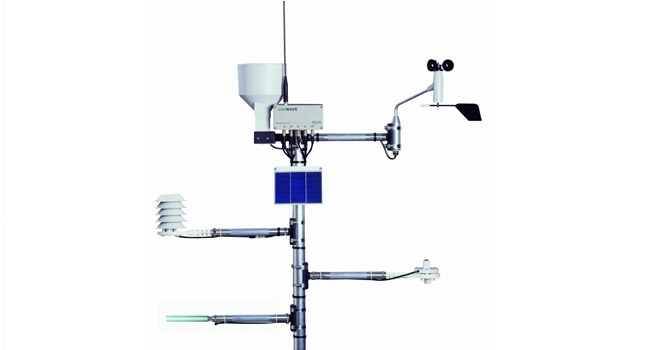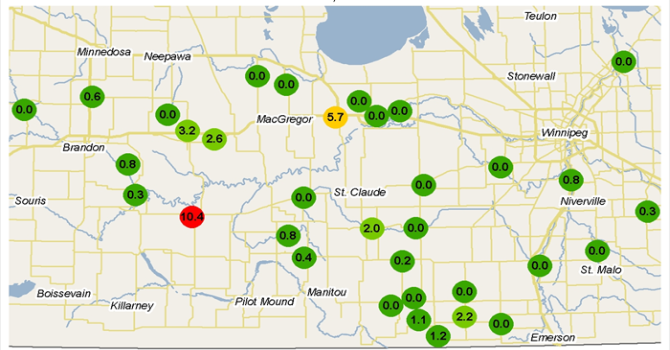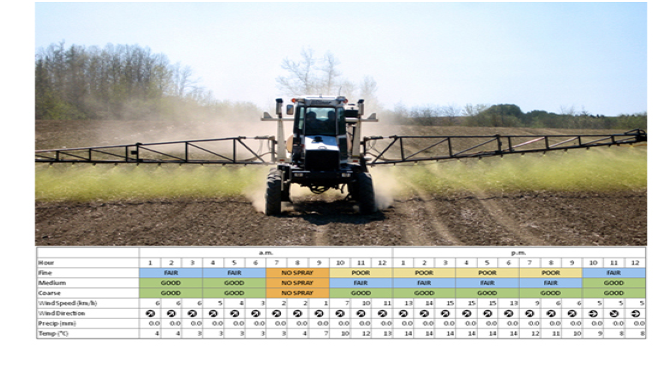Sep 12, 2013 - Disease Report #14
By Dr. Vikram Bisht, Plant Pathologist
Potato & Horticultural Crops, Manitoba Agriculture, Foods & Rural Initiatives
Late blight has been found in the central potato producing area of Manitoba. Suspect leaf samples submitted by an agronomist had leaf spots typical of late blight. Microscopic examination showed sporangial production in these spots. A visit to the field showed scattered infection within the field and some low lying areas with more infected plants. Another field across the road also showed scattered infected plants. It appears thunderstorms last week may have brought in the inoculum. Infected leaf tissue will be sent for strain identification.
In areas of high late blight risk, fungicides with systemic (locally systemic) activity and anti-sporulation capabilities could be considered for preventing the spread of the disease. Fungicides with these characteristics are listed in Manitoba Guide to Field Crop Protection (2013). Cymoxanil is considered to have curative action against newly infected lesions. With the presence of late blight inoculum in the area, it is important to tighten the frequency of fungicide applications for crops which need to be maintained for a few more weeks. Fortunately, many potato fields have been harvested or desiccated already. Please read product labels. It is important to consider the pre-harvest interval for crops that are scheduled for harvest within the coming days/weeks.
Widespread rains in the last few days have increased the weekly accumulated DSV’s, resulting in medium to high late blight risk in some of the potato production areas of Manitoba, especially in southern and western areas. It is very important now to rigorously scout for late blight, especially in wind protected and low lying areas of the fields.
It is also important for the tomato growers, especially home gardeners, to be scouting for late blight. A few days with disease and no fungicide can devastate the tomato plants.
Early in the growing season, potato mosaic samples were sent for PVY strain identification. Preliminary analysis of the samples has shown necrotic strain of virus in various parts of the province. Further analysis of the samples will be performed over the winter.
In general, early blight incidence and severity continues to be low. A few spots of severe infections were noticed in some fields, but not on Russet Burbank.
Early dying is showing in more fields. Frequent rain events and less extreme heat compared to 2012 appear to have kept the disease level lower than last year.





